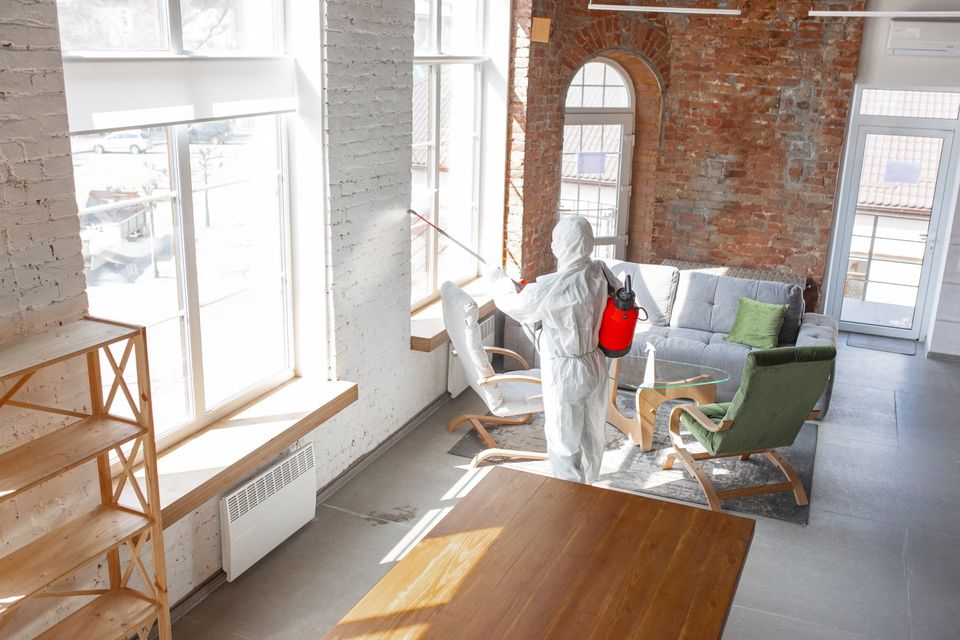Our Guide to Mold Spread in Your House
What Mold Needs to Grow
For mold to grow in your home, there must be a presence of mold spores, a surface for it to propagate, oxygen, warmth, and darkness. Coupled with moisture from high humidity levels, a water leak, or stagnant water, it forms the ideal conditions for mold growth.
Smaller mold spores resemble soot or dirt. These are easy to ignore, as you might assume that this is soil tracked from outside. However, if you see mold start to grow regardless of size, be sure to take action immediately.
How Mold Spreads Through Your Home
Mold tends to grow in basements or crawl spaces as they are dimly lit areas. However, once it starts spreading, it will rise throughout your house. Known as the stack effect, it will cause warm air to rise while exiting through the upper stories and your attic. Once this happens, it creates a vacuum on the lower level, pulling air upward from the basement and crawl space. As a result, mold spores, odors, dust mites, and anything in the air will permeate the central area of your home, where you breathe.
Fast Facts About House Mold
There are a few things you’ll need to know about mold growth in your home. For instance, organic materials like wood, fabric, dust, and wallpaper offer enough nourishment for mold to sprout and multiply. Mold also grows year-round in any home regardless of how clean you keep it. Mold spores also produce allergens when they’re in the basement and crawl space, so if you can’t pinpoint the source of your allergies, mold may be the culprit.
A mold spore is usually about 10 microns or 0.0002 inches in size. They can grow anywhere as long as there is enough humidity and warmth in the air for them to absorb the moisture. They can also digest synthetic materials like pastes, adhesives, and paints. Although mold cannot receive any nutrients for materials like concrete, metal, and glass, it can still propagate on dirt on these surfaces.
Mold exposure causes flu-like symptoms like dizziness, headache, fatigue, allergic reactions, and diarrhea. If you are experiencing any of these and can’t find the cause, you may have mold in your home.
What to Do If You Find Mold in Your Home
If you find mold in your home, you must first identify the moisture source that is permitting the mold to grow. Once you have removed the moisture source, dry out everything, and begin eliminating the mold and clean up. It will help to use dehumidifiers and fans in the process.
However, if the mold is visible, do not use fans. Otherwise, the mold spores will spread, making it more difficult to clean. Once things are fully dry, immediately clean, or dispose of any moldy materials. Ensure that you wear protective material when cleaning up, such as rubber gloves, eye goggles, long pants and a shirt, and a dust mask. Once cleaning is complete, put your clothes in a plastic bag to launder or discard before leaving the contaminated area.
If you have porous moldy items like ceiling tiles, paper products, or plaster, you’ll have to throw them if mold is visible. Bag all these items before bringing them out of the house. Use a HEPA vacuum to clean mold from non-porous or semi-porous items, like hard plastic, metal, glass, and wood.
If you have a mold infestation in your attic, crawl space, or basement, be sure to call trusted mold experts.
Keep Your Home Mold Free
Mold is an unfortunately common problem in households all over Massachusetts and Connecticut. As they can thrive in almost any space, they tend to be present even in the most immaculate homes. With this guide, you’ll now know what to do if mold spreads in your home.
About Advanced Basement Waterproofing
If you’re looking for
mold removal contractors near you in Massachusetts
or in Connecticut, give us a call at Advanced Basement Waterproofing. We specialize in complete basement waterproofing and sealing, mold removal, and mold remediation. We also offer services in French drain systems, basement refinishing, and emergency sanitation. Get in touch with us today to see how we can help you!



